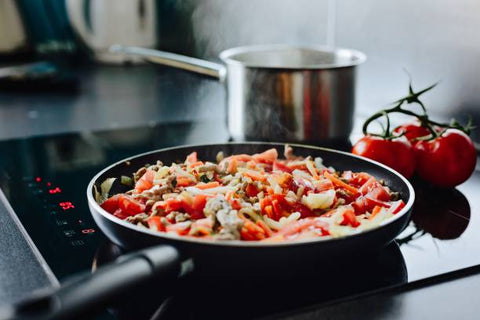Most people want faster and better ways to cook and consider saving energy simultaneously. It can be said that the induction hob can meet all these needs. Unlike traditional gas and electronic appliances, induction cooktops use high-frequency electromagnetic fields to generate heat. Knowing these things will help you make a better decision if you are considering an induction cooker.

High energy efficiency
On an induction hob, the bottom of the pot is heated directly by the magnetic field and therefore receives all the heat energy produced. The cookware of traditional stoves receives heat indirectly, so a lot of heat is lost when heating food. In addition, cooking food with an induction cooker does not diffuse too much heat into the kitchen, so it is suitable for summer use. Induction cooking is more efficient than traditional methods, with up to a 70% reduction in energy consumption. Induction hobs take less time to get 'up to heat,' which saves on energy usage – and with 90% of the energy produced channeled into the pan itself, induction hobs are hugely energy efficient during cooking, which is excellent news for budget-stretched businesses as well as facilities management partners bidding on commercial contracts.
Safe to touch
Since the heat of the induction cooker is only transferred to the magnetic object, only the electromagnetic elements under the bottom of the pot are heated. And there is no flame or element to ignite fumes or cause burns. When pans are removed, the hob stops heating up. Therefore, even if a child's hand accidentally touches the edge of the stove. An integrated Pan Detection System means the hob will recognize when a pan is in place, so there's no risk of leaving the heat on (and no need for as much extraction). This reduces the risk of burns – both for food and staff. Plus, spills or stains won't get burned on the stovetop, so it's easy to clean up.
Induction cooktops can heat up faster than gas or electric cooktops and don't waste much heating energy, so it takes less time to cook food. Cooking quickly also saves energy, which saves money and is also good for the environment.
Can only use specific cookware
The disadvantage of induction cooktops is that only certain types of cookware can be used. Due to the reliance on magnetic fields for heat, pans made of magnetic materials such as cast iron and stainless steel pans must be used. Although this cookware is inexpensive, if the original cookware is copper, aluminum, or glass, it will cost some extra money to replace the cookware.
Noise
The induction heating process is silent, but many induction cookers have fans installed to prevent overheating. Unless you are sensitive to noise, the noise of the fan won't be annoying. In addition, vibrations from the electromagnetic field unit can sometimes cause some noise, and it's not easy to notice.
With so many benefits, it's easy to see why induction hob cooking should have its place alongside, even instead of traditional gas and electric methods. It promotes efficiency, is easy to use, and offers consistent results – all things that a commercial kitchen needs to succeed.

